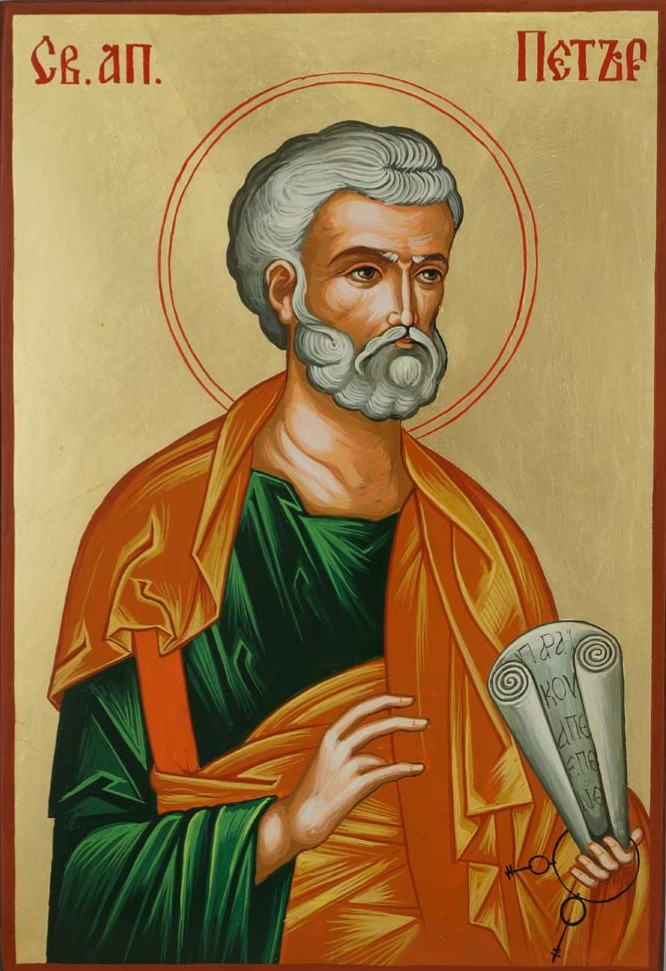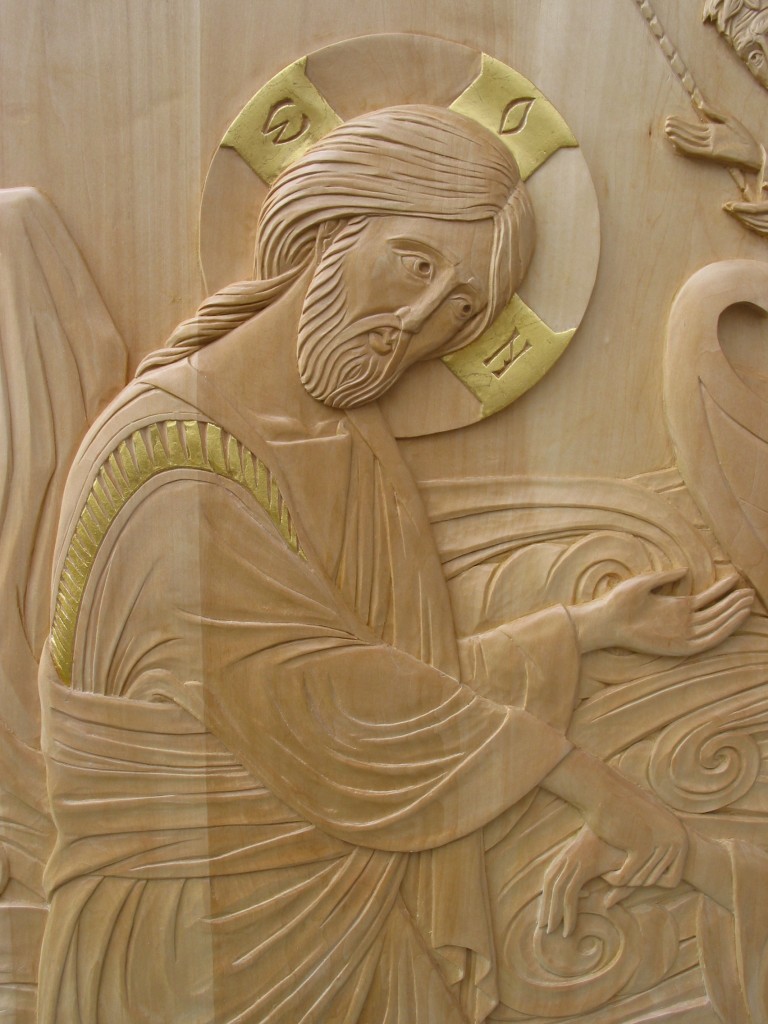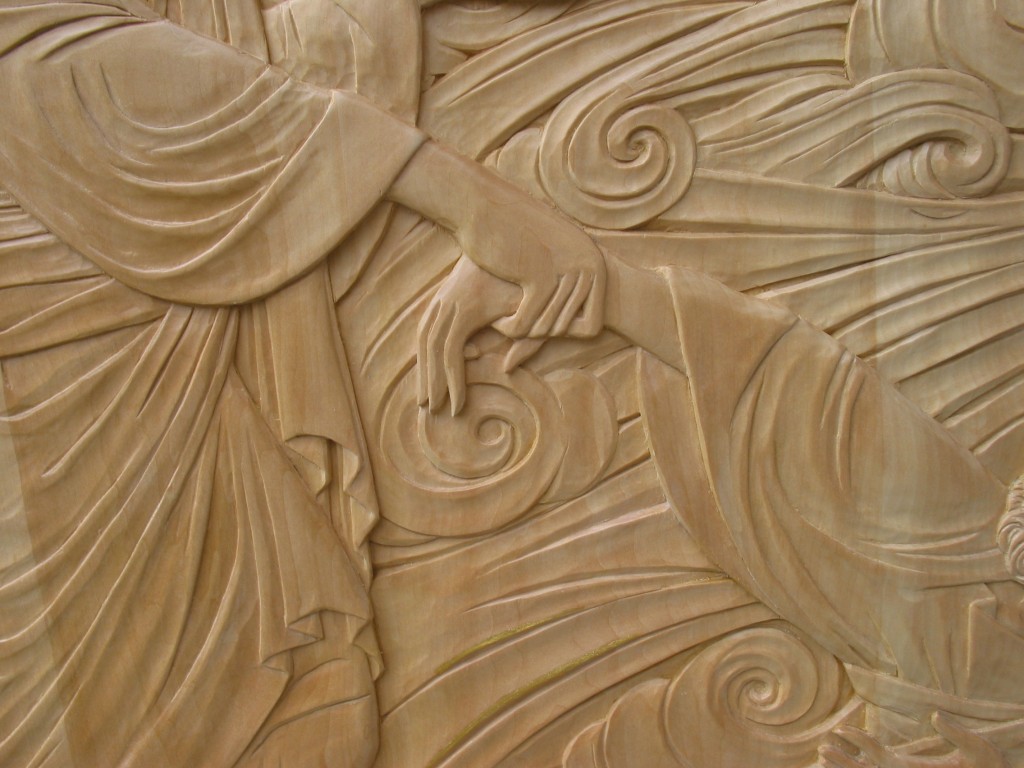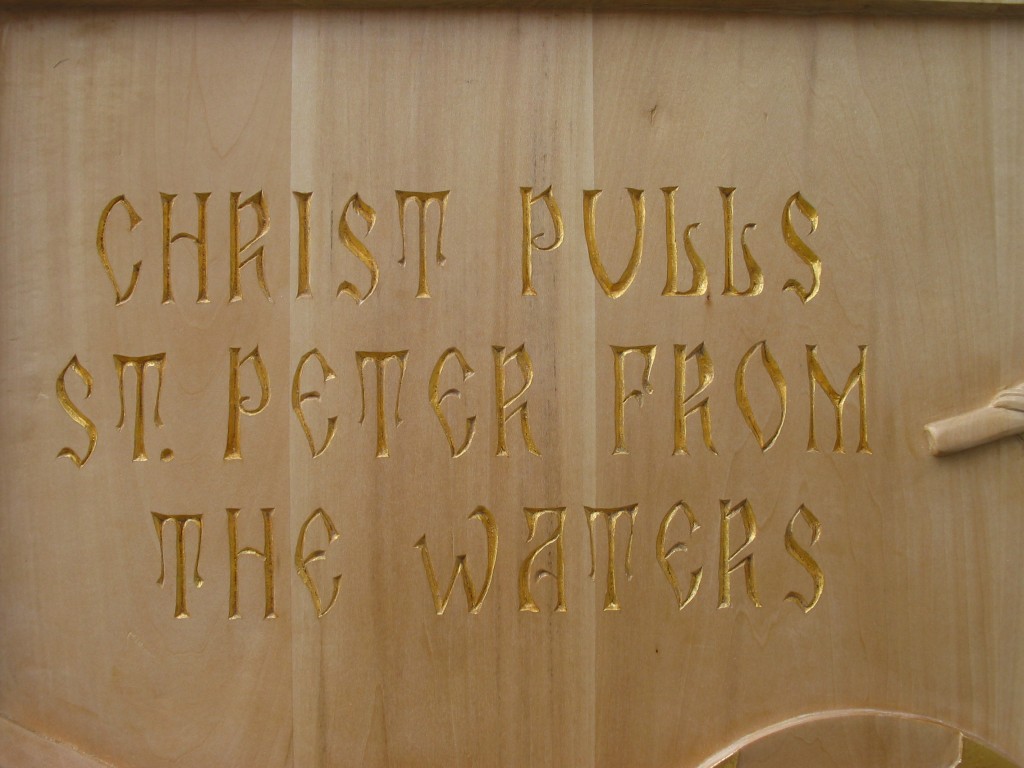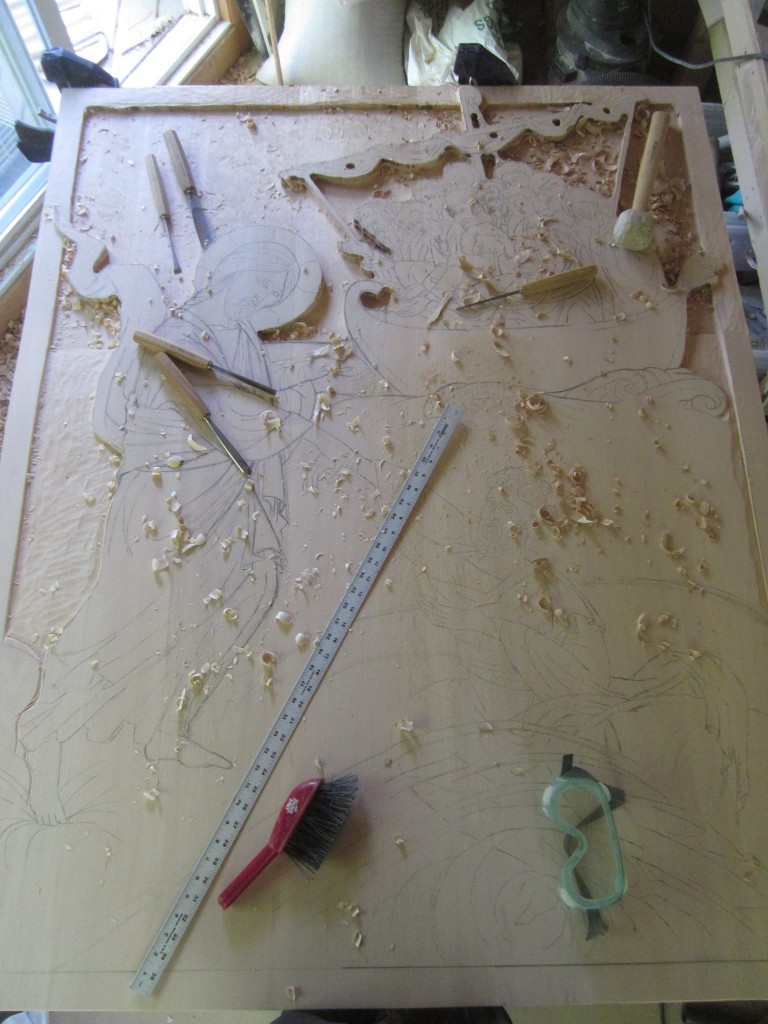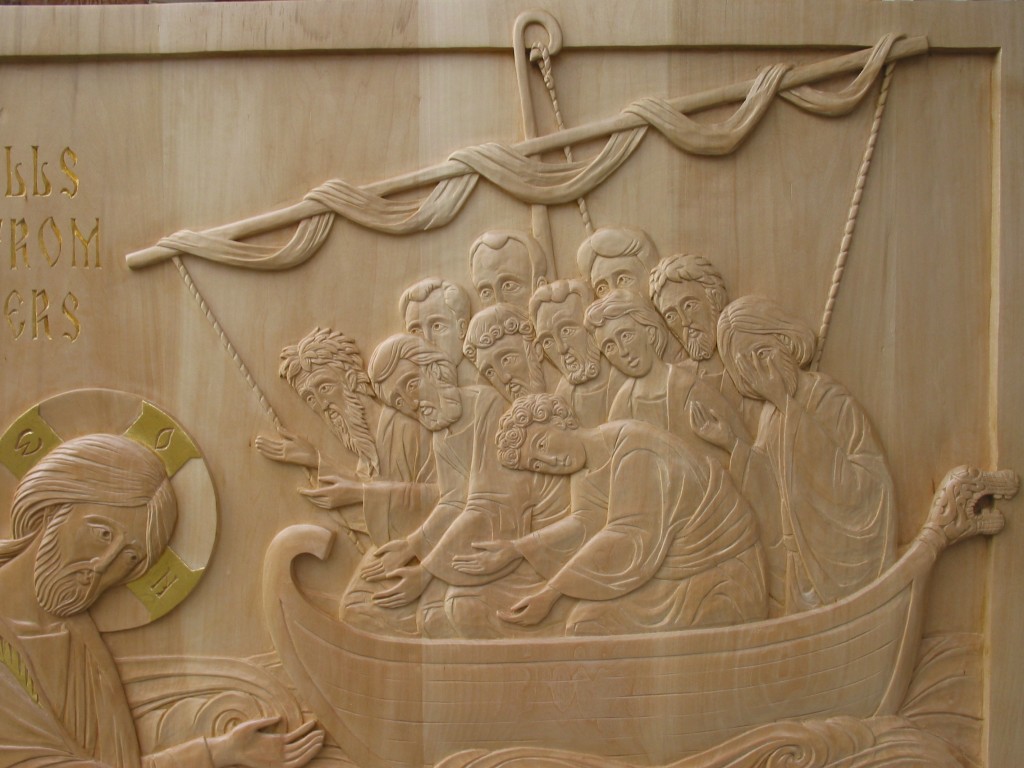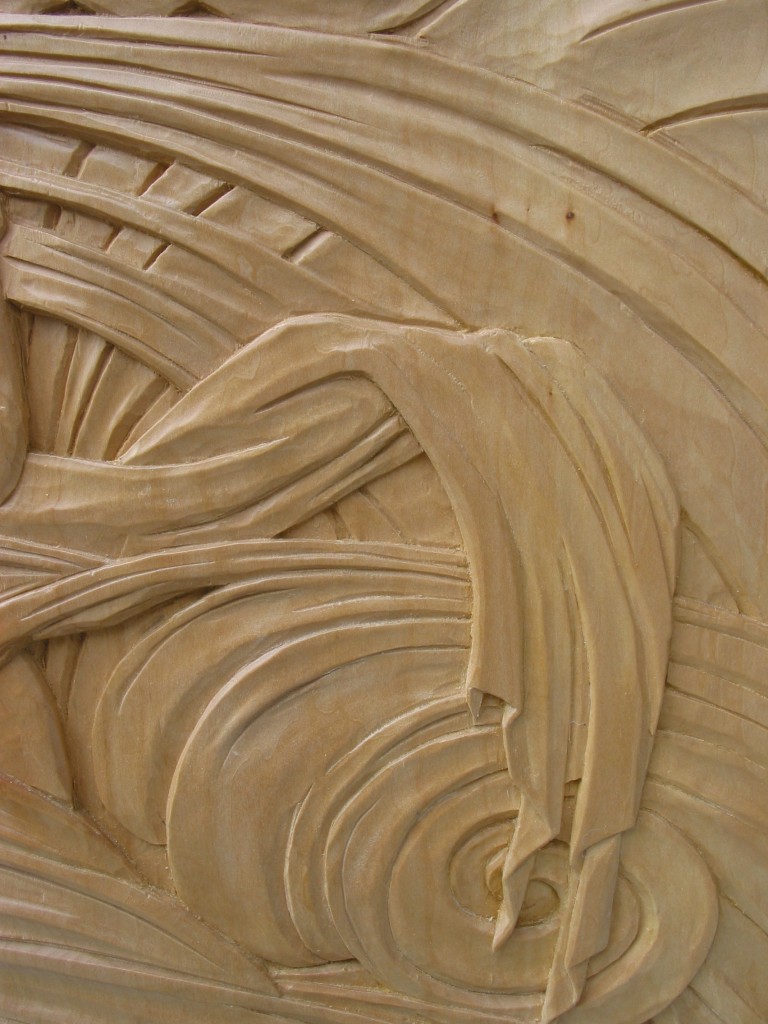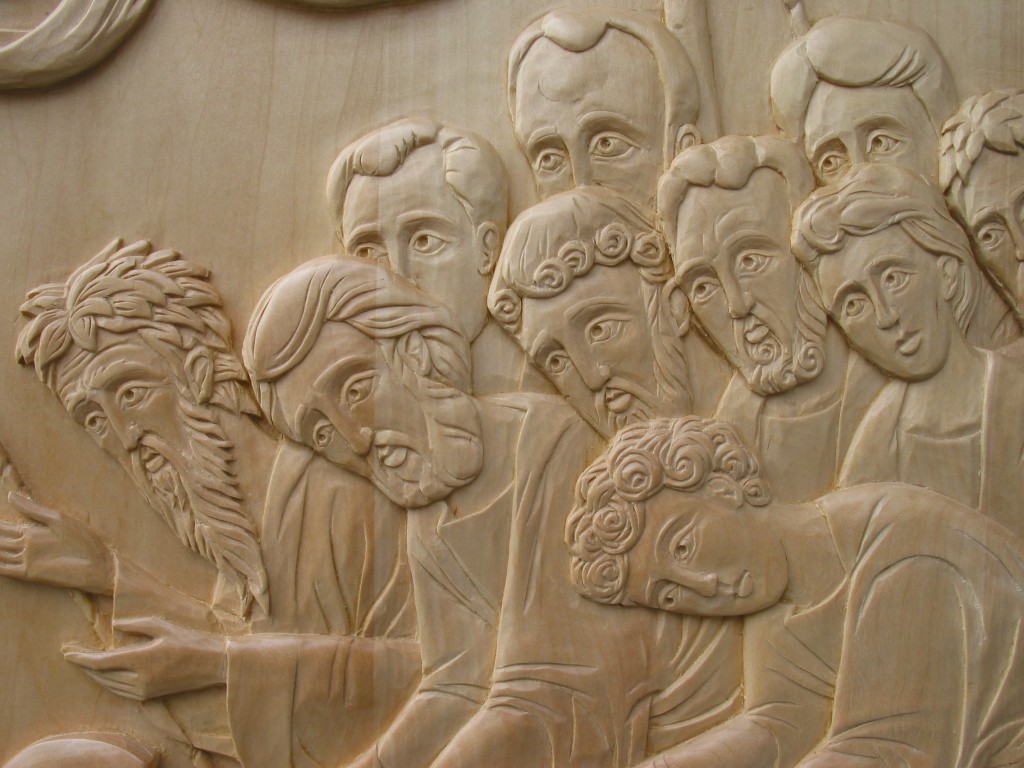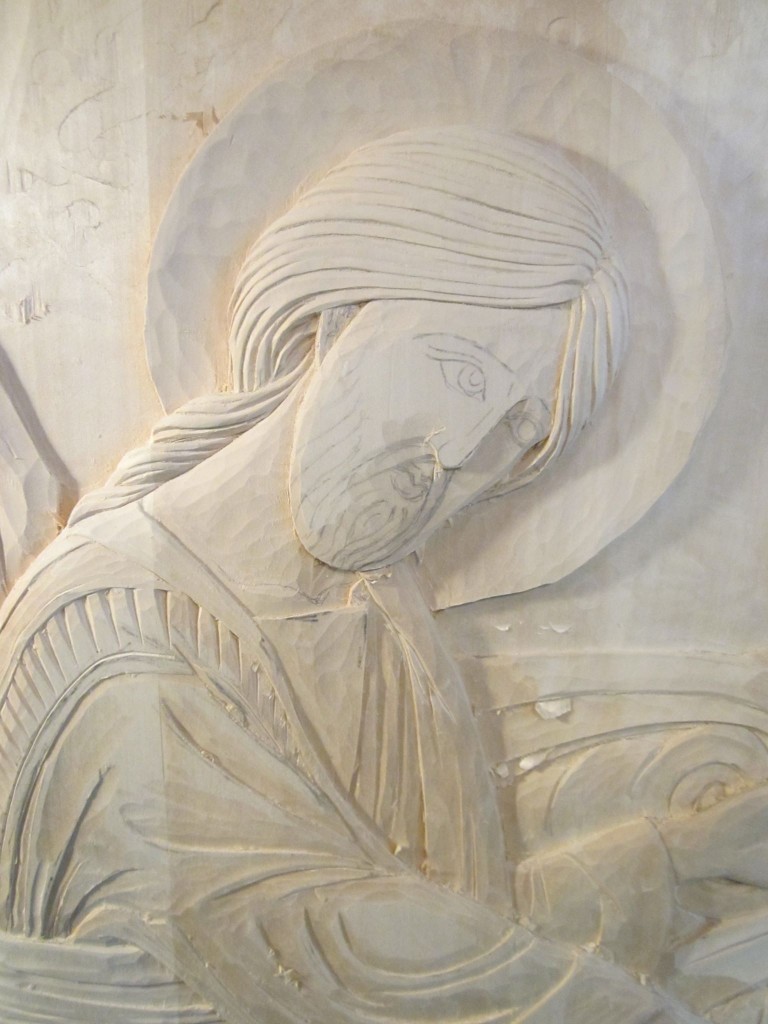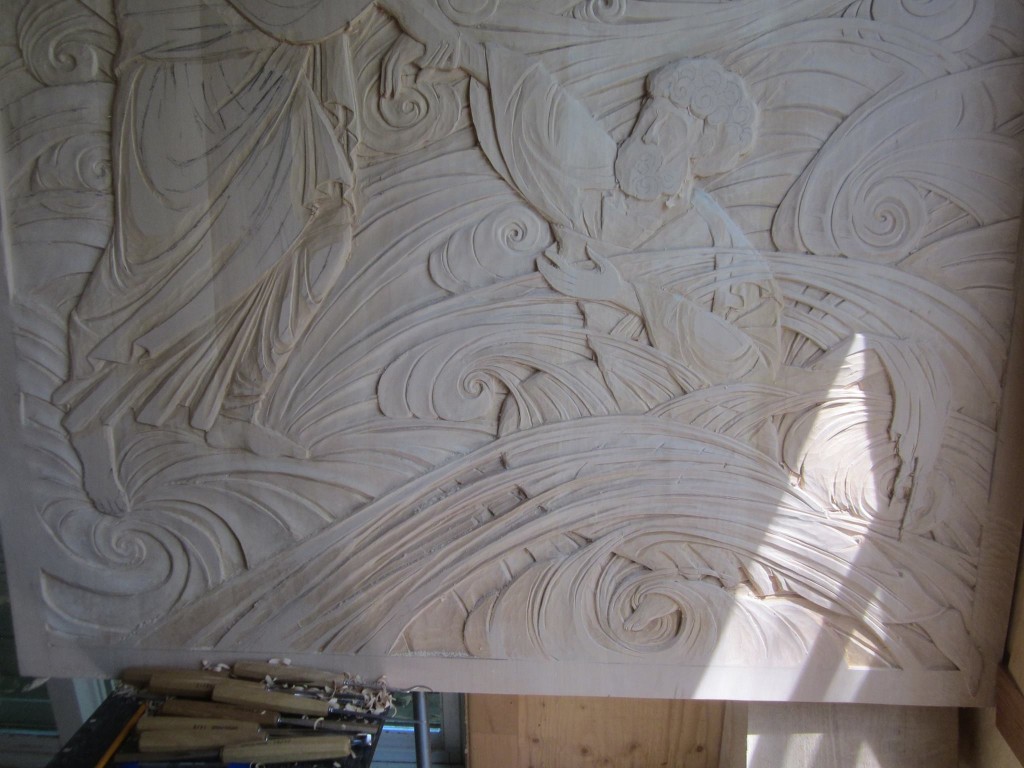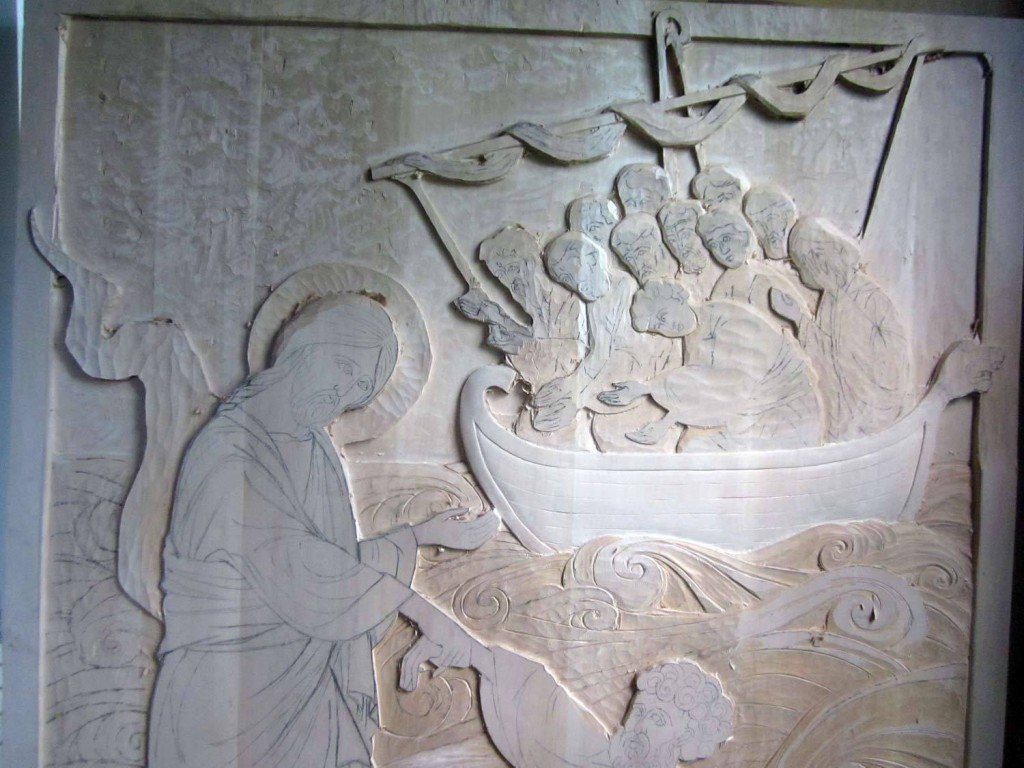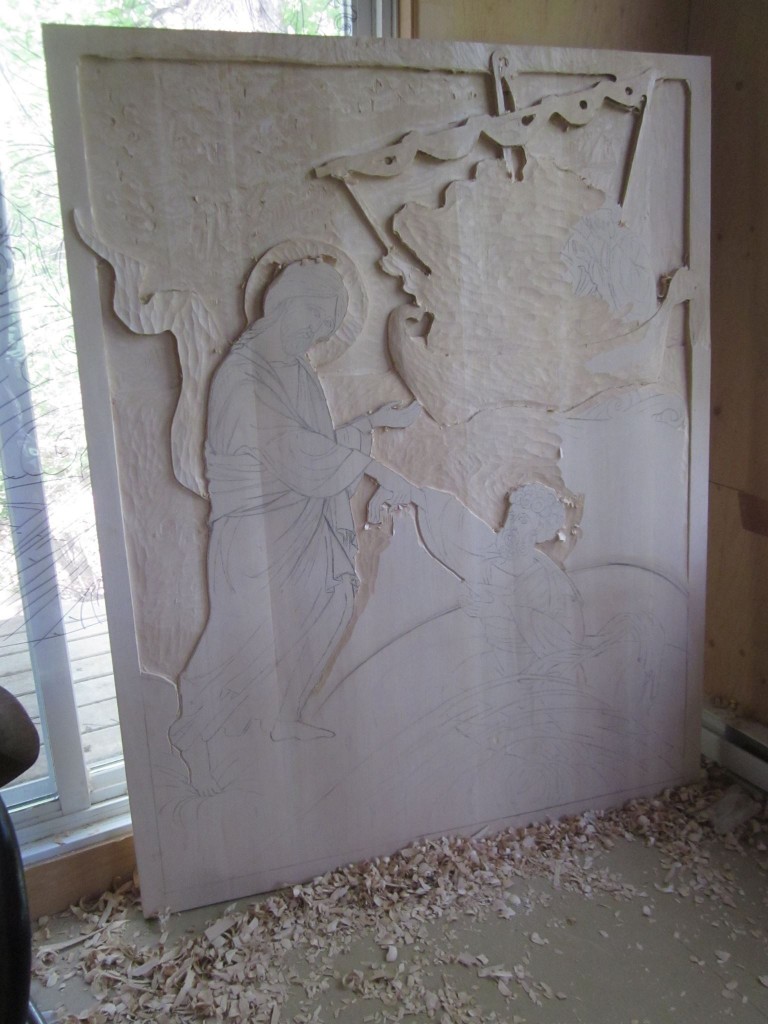Source: Orthodox Arts Journal
By Jonathan Pageau
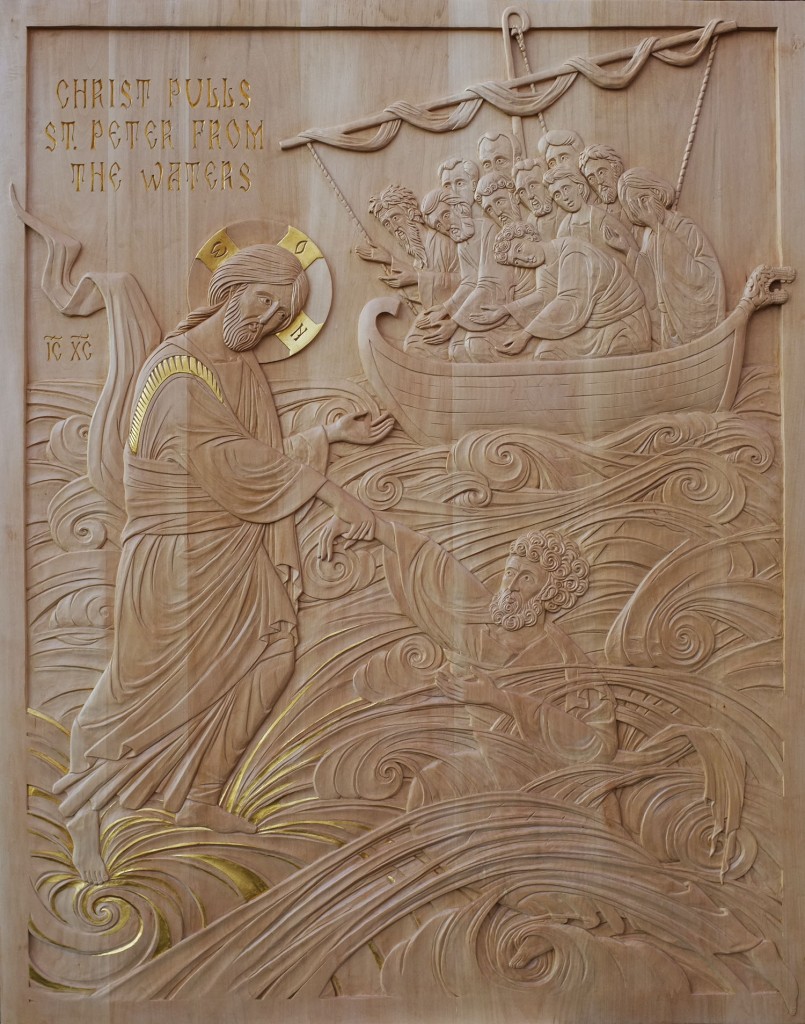
Since I began icon carving full time 4 years ago now, I had a secret list of the things I wanted to make, certain objects and images that were dear to me. To my own joy and surprise, I have been progressively checking off items from that list with ongoing commissions, making even those objects and icons I did not think could find patrons such as complex reliquaries, wedding crowns, opus sectile icons or the image of the Holy prophet Jonah.
One of the images I had secret hope of making is Christ pulling St-Peter out of the water. For those who have read some of my writings one can quickly see how it encompasses so much of my vision of the incarnation, of death, resurrection and the pastoral reminder on where to focus our eyes when advancing into the chaotic world. So last year, when a patron commissioned this icon at a size of 4’ x 5’ for St. Peter Orthodox Church in Bonita Springs, Florida, I was ecstatic. This is the biggest icon I have carved to date.
In working out the drawing for the icon carving, I based the composition on my favorite version of this event, a 12th century mosaic from Sicily.
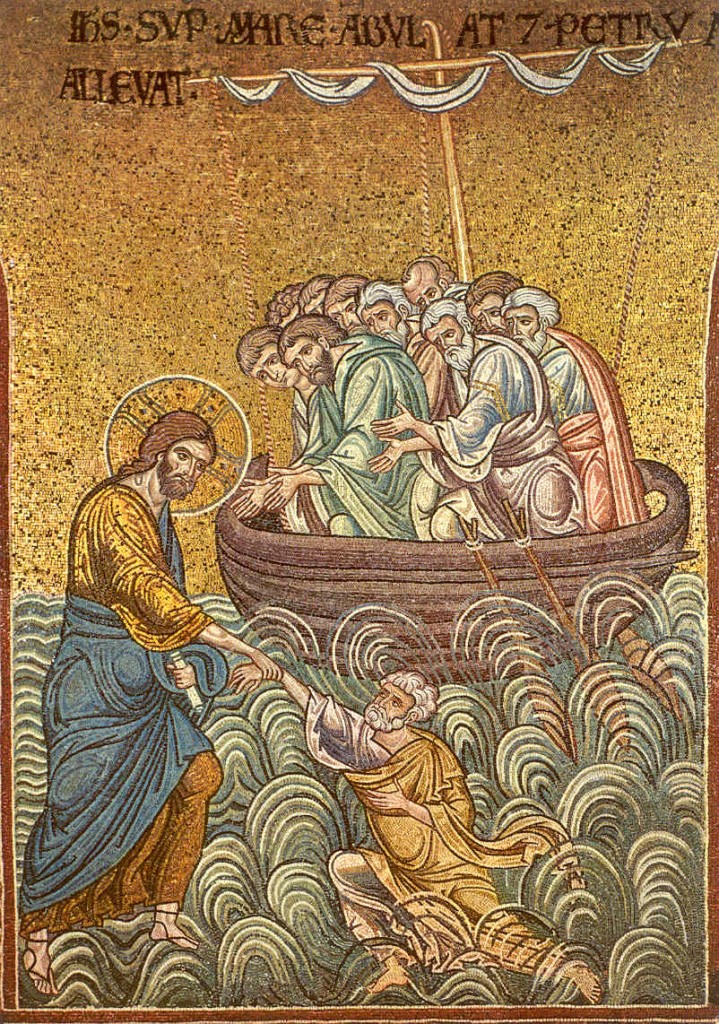
Many details are different, but the basic composition is the same. I reduced the size of the boat to make it less overwhelming and to fully have St-Peter under the boat. I also wanted to make sure we could see at least the eyes of all the Apostles. I changed Christ’s left hand so that instead of holding a scroll, it was placed in a position suggesting the upcoming motion, the rising of St-Peter. I also added a few details, such as a dragon head on the boat and I changed the shape of the mast and sail to suggest a Chi-Ro.
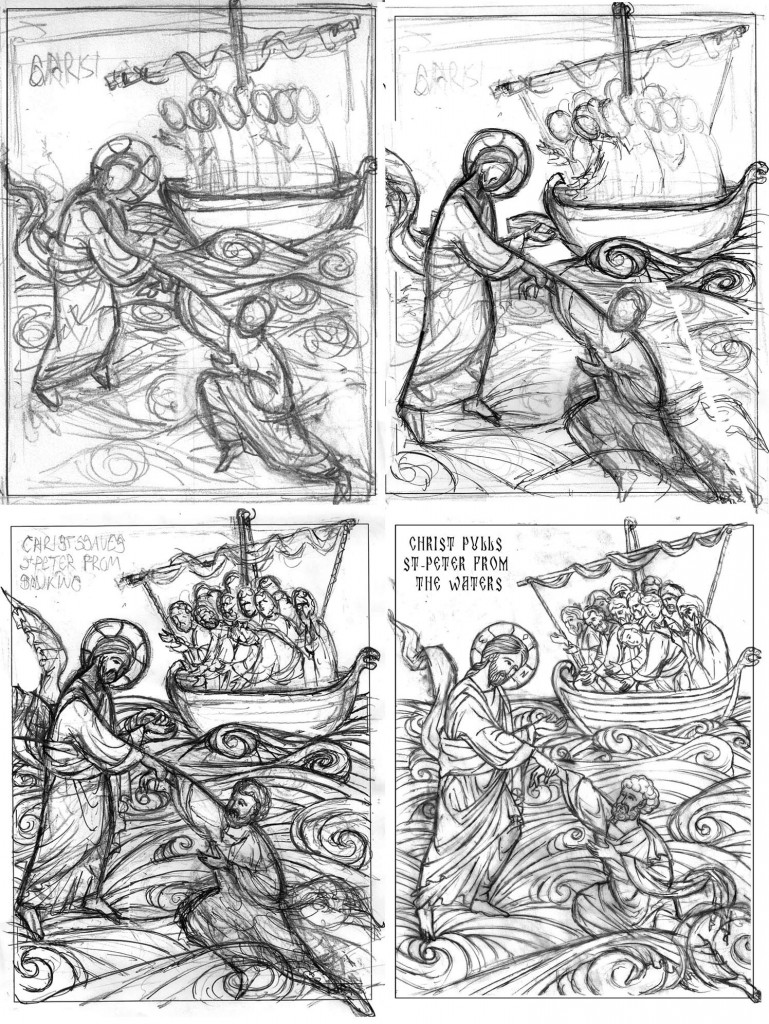
One of the things that kept changing as I worked on the drawings was just how deep Peter was in the water. The priest of the parish, Fr. Hans Jacobse, commented that he really wanted the water to be high up on his body to give that sense of sinking, but this created some challenges for me because I still wanted us to see St-Peter. Wood is generally opaque to say the least. In the mosaic version, there is wonderful use of transparency and so I began pondering just how it could be possible to at least suggest transparency in wood.
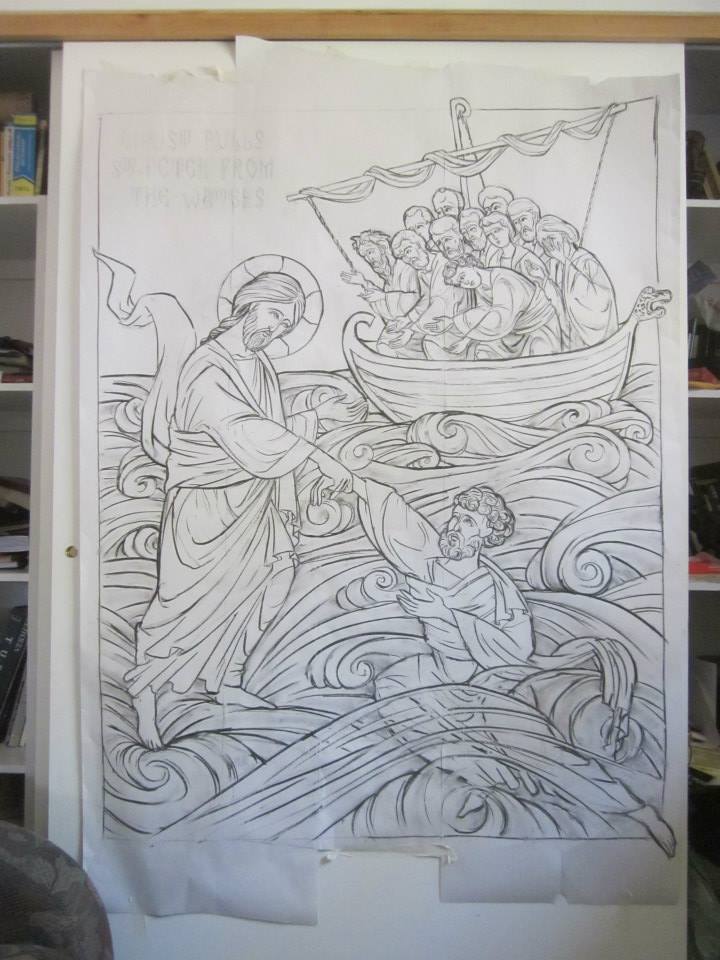
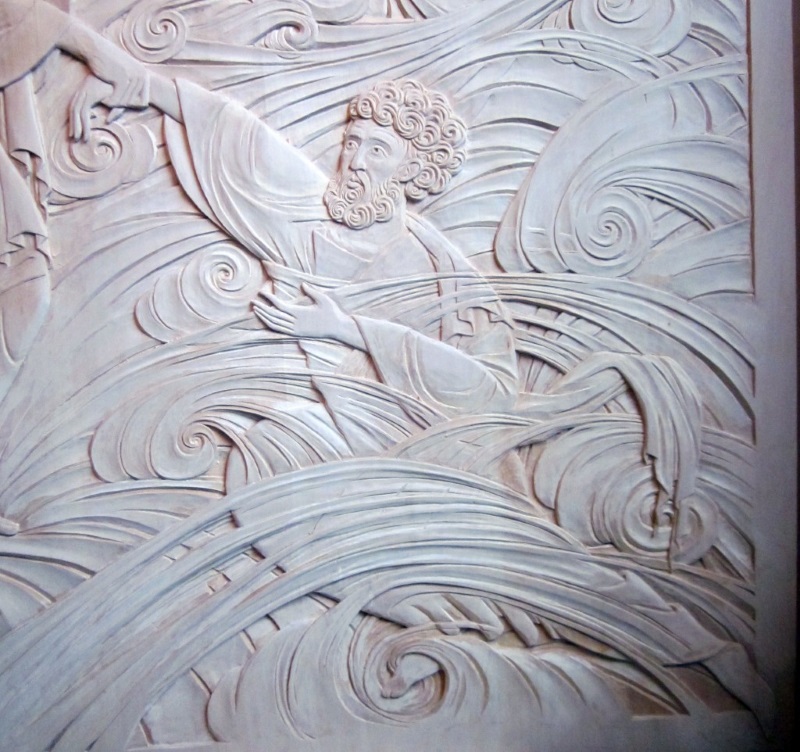
I wanted the composition of the water to say something about the event and so beyond suggestions of transparency to show that St-Peter is actually in the water, I also designed it so to have a wave wrapping around his right foot in an image of the Psalms:
The cords of death entangled me; the torrents of destruction overwhelmed me. The cords of the grave coiled around me; the snares of death confronted me. (Psalm 116:3)
The water under Christ’s feet in contrast seems to shoot out from under them, organized by their contact with them. I gilded some of the water to add to this sense of the organizing and transfiguring effect Christ has on creation.

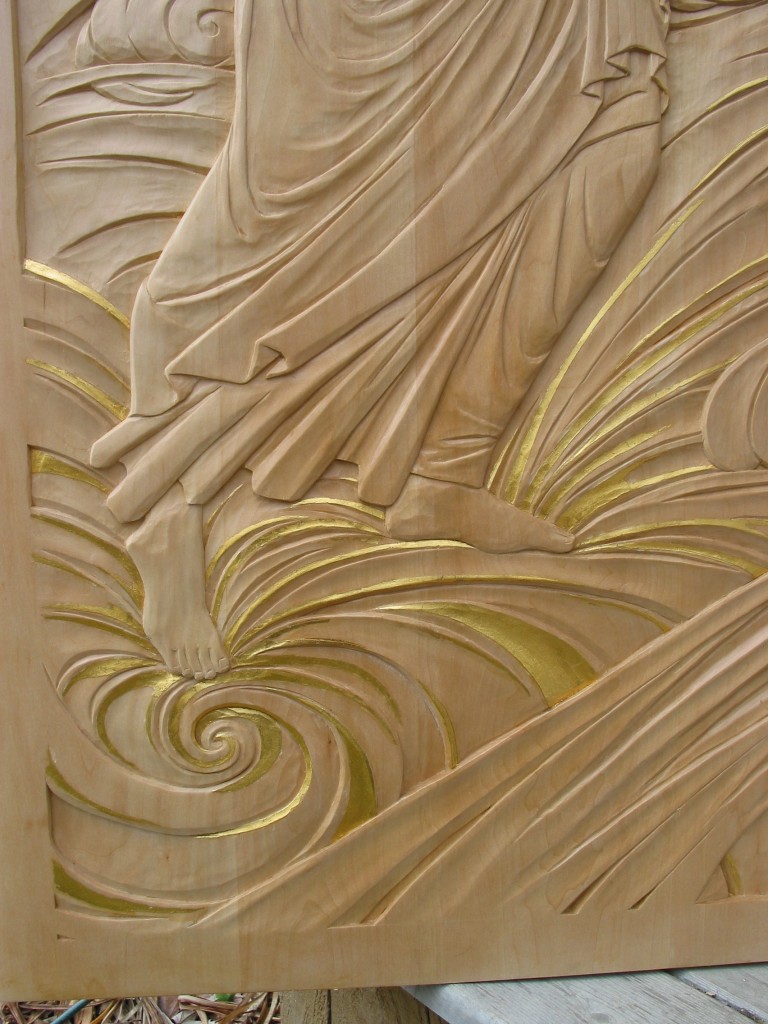
Visually, I was looking forward to taking further the experimentation in carving water I had begun in my icon of Jonah. I wanted to create a sense of almost overwhelming movement which would contrast with the vigorous yet safe relationship established between Christ and St-Peter. Christ holds St-Peter by a firm grip, reminding us of the grip Christ has on Adam in the icon of the resurrection. Their gazes are fixed on each other, Peter with a hint of surprise and Christ with calm compassion.
When Christ appears to the Apostles floating at sea, the waters are rising in a tempest. Christ approaches them above the flood, mastering the chaos, the chaos of the primordial waters, the chaos of the passions, of doubt, of all that is in the world of death. St-Peter is the only one to dare walk out with Christ, but because of this boldness, when peering into the storm he panics and sinks. Which one of us has not experienced this? We can imagine St-Peter crying out:
Save me, O God, for the waters have come up to my neck. I sink in the miry depths, where there is no foothold. (Psalm 69: 1,2)
But the face of Christ appears to him through the waves and his hand reaches to catch him. We can hear St-Peter confess:
He lifted me out of the slimy pit, out of the mud and mire; he set my feet on a rock and gave me a firm place to stand. (Psalm 40:2)
This is St-Peter, the son of Jonah, both the stable “rock” and the one who sinks, the bold fisherman who finds the gold coin in the fish’s mouth, but also that one in constant danger of being swallowed by the sea.
This is his story repeated over and over in the Gospels, the story of the one who recognized Jesus as Christ then immediately called out by Christ to “get behind me Satan”, the one who tells Christ he will never deny him then deny him three times as the three days of Jonah in the fish, the three days of Christ in the grave. To meditate on this cycle in the story of St-Peter is to pierce so many mysteries of the Church, so many signs of the times and so many cycles in our own lives.
What is the end of this, what is the end of this story? When Christ appears to the disciples on the Sea of Galilee after his resurrection (John 21), it is the same sea in which St-Peter sank when attempting to walk on water. St-Peter recognizes his Lord on the land, and this time he does not walk on the water. This time his boldness leads him to dive into the deep, to put on his garment and voluntarily plunge, then to be asked three times by Christ: “Peter, son of Jonah, do you love me?” It is not when we walk on the water that we are closest to Christ, but it is when our boldness serves humility. It is when our boldness leads us to die that we are closest to the image of Christ. What impossible thoughts to consider, what scandal it is to fathom such things?
Coming back to our icon, we can say without hesitating that the image of St-Peter being pulled out of the waters is an image of our salvation in so many ways, and I find great joy in having made it. I hope it will be a blessing for the parish to which it is headed.
